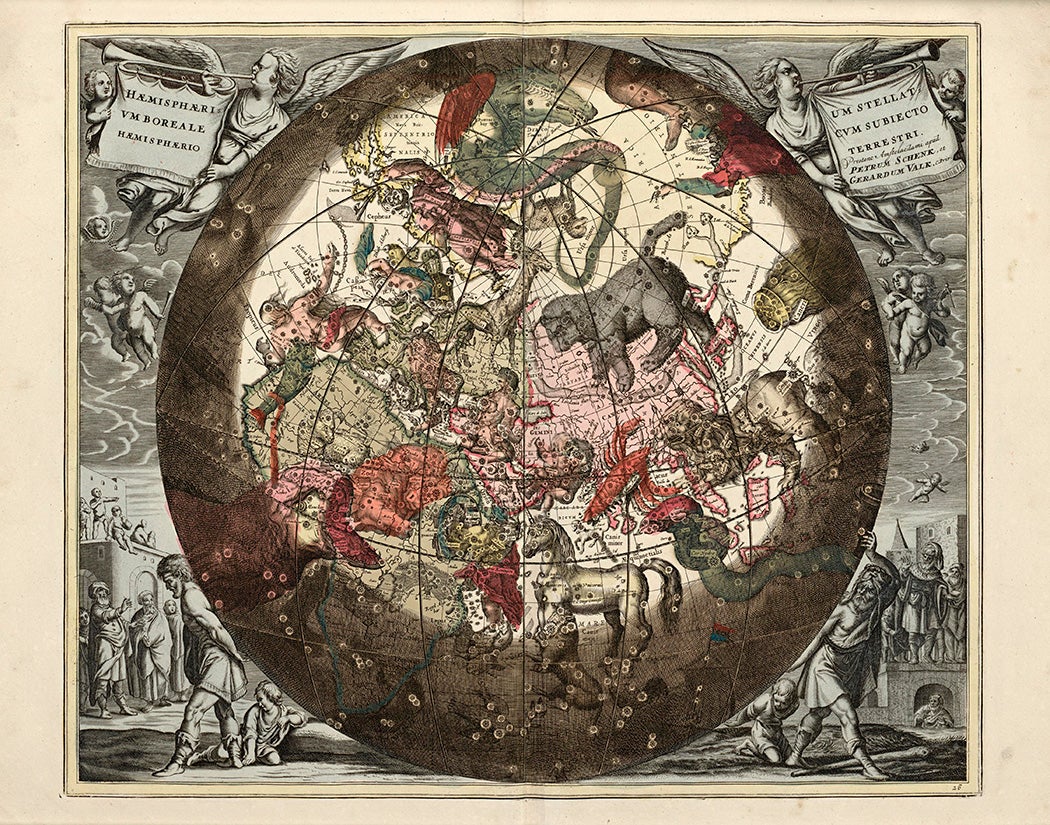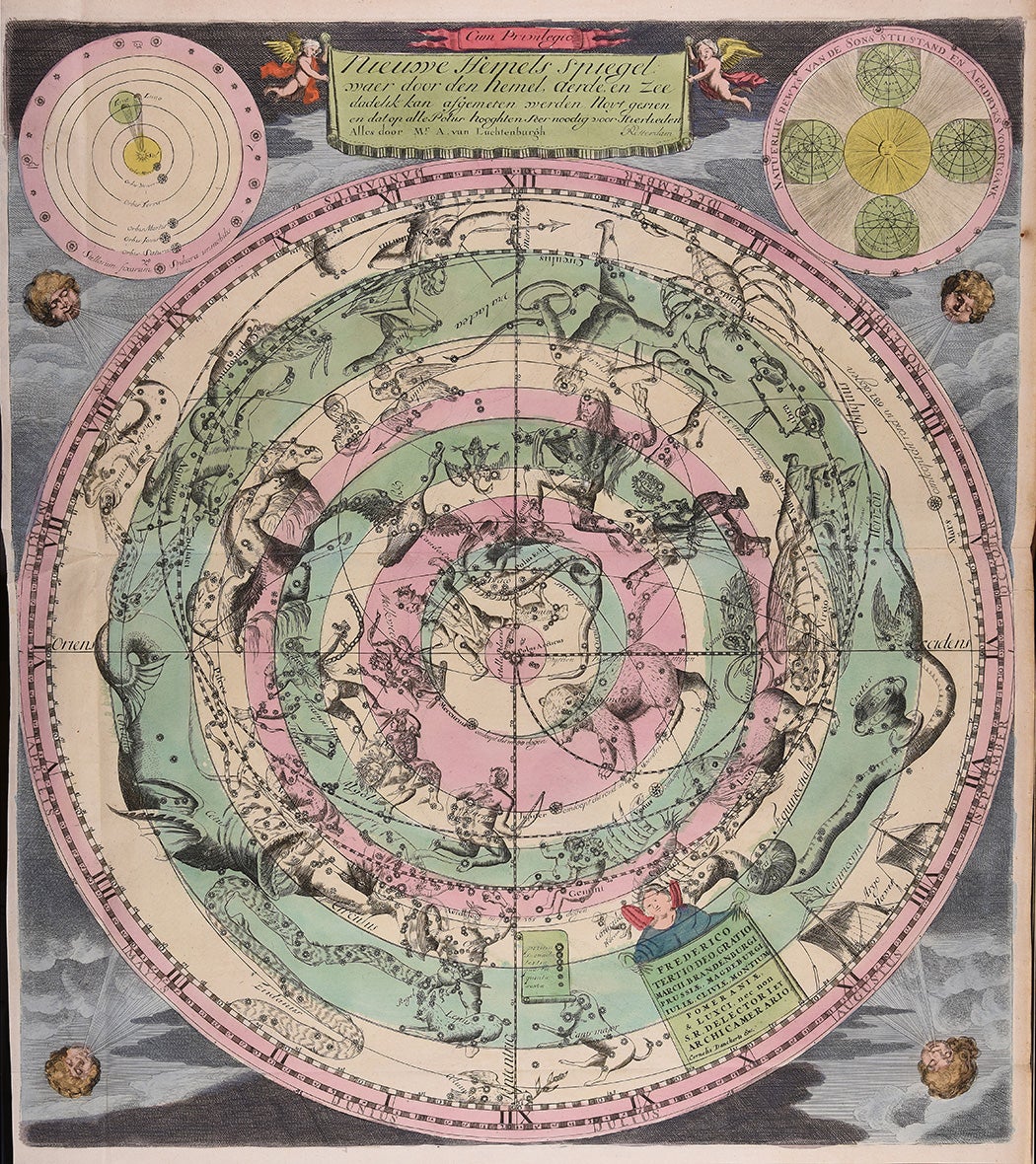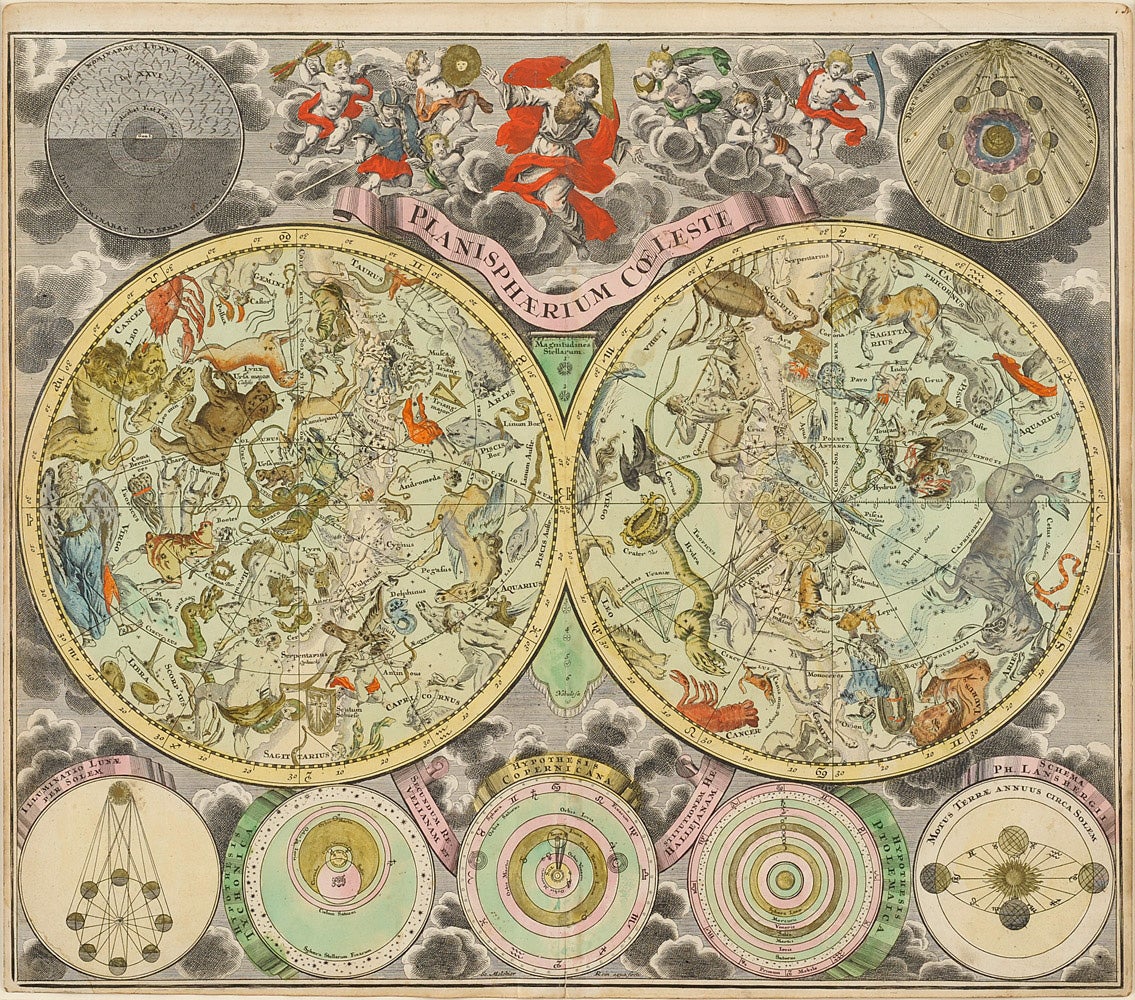Some Christians today see astrology as a clear affront to their beliefs, and possibly a dangerous manifestation of the occult. And yet, as historian T.J. Tomlin writes, through the eighteenth century, it was a central aspect of the almanacs that were ubiquitous in Protestant American homes.
By 1800, Tomlin writes, U.S. printers produced enough almanacs to provide one to every household in the country. People turned to the books for a clear, simple idea of how the universe worked. Their astrological calculations helped readers gain practical know-how about agricultural management, weather, and personal health.
“Had they been filed according to present-day sorting criteria, almanacs would have been found among eighteenth-century reference books, not in the spirituality section,” Tomlin writes.

Like the study of the natural world in general in that time and place, almanacs were rooted in Protestantism. They presented simple, widely held religious ideas—God’s power, redemption through Christ, the promise of heaven—to an increasingly literate public. “This was the liturgy of early American popular culture,” Tomlin writes.
Weekly Newsletter
But there were debates about what sort of astrology was compatible with this religious belief. “Natural astrology,” using the movements of heavenly bodies to draw conclusions about agriculture, medicine, and the weather, was widely regarded as “a way to illuminate God’s creative impulse in the universe,” Tomlin writes. But “judicial astrology,” predicting the events of individual lives or political affairs, might be seen as blasphemous.

One controversial element of many almanacs was “the Anatomy,” a visual depiction of the moon’s influence on the human body. Tomlin writes that some readers and authors apparently objected to it based on Congregationalists’ opposition to images and icons. Some almanac makers made it clear that they would have preferred not to print it but were moved by popular demand. Below the Anatomy figure in a 1770 almanac from Charleston, the printer provided a blunt explanation for its inclusion:
Should I omit to place this figure here
my book would hardly sell another year.
What (quoth my Country Friend) D’ye think I’ll buy
An ALMANACK without the’ Anatomy?
As for its Use, nor he, nor I can tell;
However, since it pleases all so well
I’ve put it in, because my book should sell
Tomlin writes that authors included similar caveats about their astrologically based weather forecasts, which they admitted were far from precise. Some even mocked rivals who presumed to predict too much. Describing a competitor, almanac maker Jacob Taylor wrote that Pennsylvania had “the honour of a pretended infallible mathematician and astronomer, who can call every star by its name, and discuss the whole phenomena of nature,” as if he had “stood by the infinitely wise and powerful Creator, when he spoke the chaos out of nothing.”

Of course, in part it was simply prudent to avoid overpromising, particularly when it came to predicting a season’s weather based on the movement of the planets. But for authors concerned about overstepping the limits of what humans should presume to know, it was good theology as well.
Support JSTOR Daily! Join our new membership program on Patreon today.







